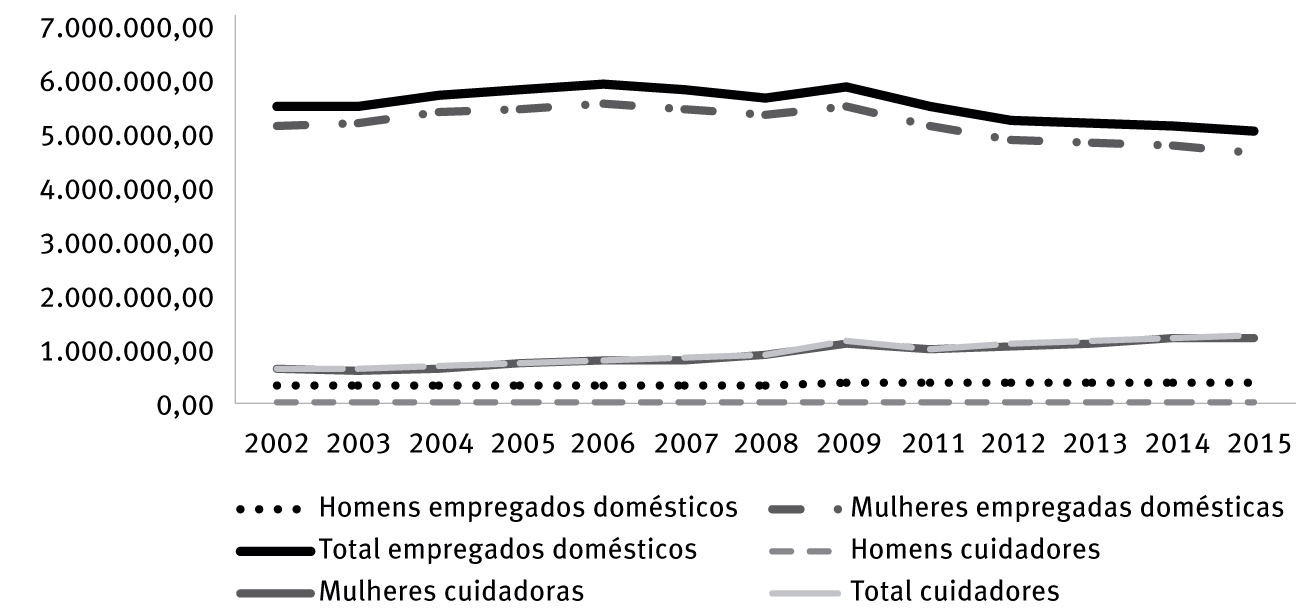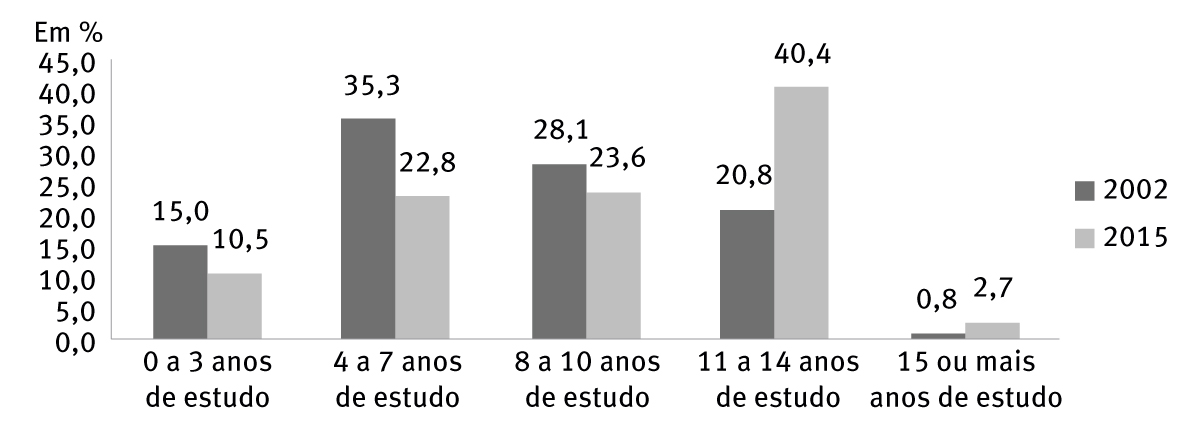Abstract
There is considerable fluidity in the border between the professional activity of domestic workers and the assignment performed by care workers. But how different are these occupational categories in relation to their socioeconomic profile? Throughout this article, based on data from the Pesquisa Nacional por Amostra de Domicílios (PNAD), we sought to answer whether during the period 2002-2015 these two groups presented greater approximations or inflections in their characteristics. Based on five analytical dimensions – namely, individual characteristics, working conditions, degree of social and labor protection, household situation, and isolation / belonging – the statistics presented in this paper suggest an approximation over the years between the profile of domestic workers and care professionals. This assertion is valid for practically all indicators analyzed. Both occupations are marked by precariousness at work: they combine low remuneration and social protection levels with many hours of paid work, coupled with long unpaid hours. In addition, they are mostly exercised by black women. Uniquely, schooling is the only socioeconomic characteristic which in fact differentiates the two groups, considerably higher for care workers.
Key words
Domestic employment; Care; Care workers; Labor market

 Thumbnail
Thumbnail
 Thumbnail
Thumbnail
 Thumbnail
Thumbnail
 Thumbnail
Thumbnail
 Thumbnail
Thumbnail
 Fonte: IBGE. Pesquisa Nacional por Amostra de Domicílios (PNAD).
Fonte: IBGE. Pesquisa Nacional por Amostra de Domicílios (PNAD).
 Fonte: IBGE. Pesquisa Nacional por Amostra de Domicílios (PNAD).
Fonte: IBGE. Pesquisa Nacional por Amostra de Domicílios (PNAD).
 Fonte: IBGE. Pesquisa Nacional por Amostra de Domicílios (PNAD).
Fonte: IBGE. Pesquisa Nacional por Amostra de Domicílios (PNAD).
 Fonte: IBGE. Pesquisa Nacional por Amostra de Domicílios (PNAD).
Fonte: IBGE. Pesquisa Nacional por Amostra de Domicílios (PNAD).
 Fonte: IBGE. Pesquisa Nacional por Amostra de Domicílios (PNAD). Nota: Rendimentos deflacionados para setembro de 2015, segundo índice proposto por
Fonte: IBGE. Pesquisa Nacional por Amostra de Domicílios (PNAD). Nota: Rendimentos deflacionados para setembro de 2015, segundo índice proposto por